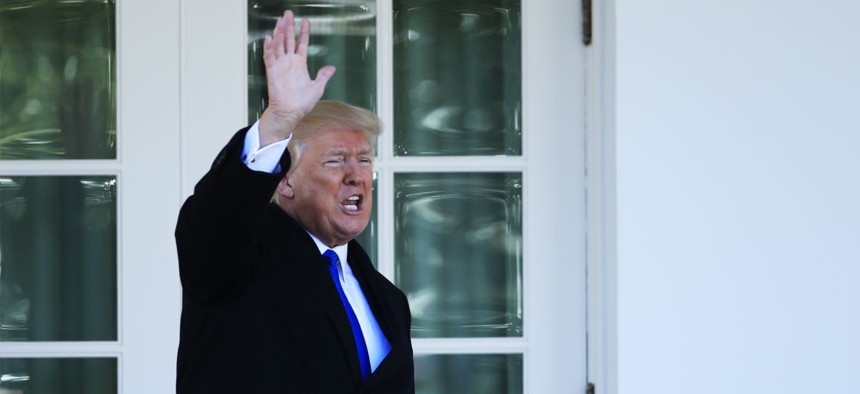
Manuel Balce Ceneta / AP
In Trump’s First Year, a Third of White House Senior Staffers Changed Jobs
Twenty-two out of the 64 key staff positions, or 34 percent, changed hands.
Since his inauguration in January 2017, Donald Trump has set a few records. The stock market hit several highs last year, as did the president’s disapproval rating. Now here’s another record: According to a report released Jan. 19, Trump’s first year of senior-staff turnover was the highest of any U.S. president since at least Ronald Reagan.
The report’s author, Kathryn Dunn Tenpas, is a non-resident senior fellow at the Brookings Institution, and has spent more than two decades researching White House turnover. She identified 64 influential positions in Trump’s White House, and counted departures via resignation, firing, or movement to another position within the executive branch. In the Trump administration’s first year, 22 out of the 64 key staff positions, or 34 percent, changed hands. That’s compared with 9 percent for Barack Obama’s first year in office, 6 percent for George W. Bush, and 11 percent for Bill Clinton. Ronald Reagan, the earliest president Dunn Tenpas looked at, had a first-year turnover rate of 17 percent. (Past presidents’ key staffers numbered between 53 and 70.)
Dunn Tenpas attributes Trump’s turnover to two factors: His focus on loyalty over qualification–the president has leaned on private-sector connections and a relatively small pool of campaign staff–and the chaos caused by Trump’s frequent controversial remarks and surprise policy announcements.
Don’t expect stability ahead, either. Trump’s predecessors typically experienced higher staff turnover during their second year, as those with White House experience under their belts moved on to private-sector jobs with bigger paychecks. Some in the Trump administration have already announced plans to leave after the first year, and others are looking for possible exits. To date, Trump has lost most of his initial core team.
“If history is any guide,” Dunn Tenpas writes, “retaining senior staff members in year two will be an even more daunting task.”






